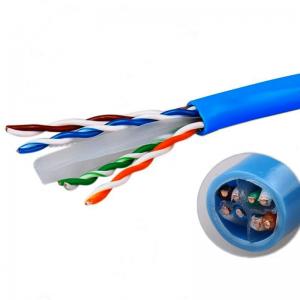23AWG Cat6 Lan Cable
Add to Cart
23awg Cat 6 Utp Cable
Even though Cat5 and Cat6 cables are neck and neck, this does not mean that Cat5e and Cat6 cables can replace each other.Consumers still need to master the characteristics of each in order to make better purchases based on their network needs.So what are the differences between the super five types of twisted pair and the six types of twisted pair?
First of all, the biggest difference between the super five type
network cable and the six type network cable is the difference in
its performance.Although both Cat5 and Cat6 systems can transmit
gigabit networks, the standard adopted by Cat5 systems to transmit
gigabit networks is 1000BASE-T, while 1000BASE-TX is the way that
Cat6 systems work.In this respect, Cat5 systems are only "capable"
of supporting Gigabit Ethernet, while Cat6 systems are "truly
guaranteed" to use Gigabit Ethernet.
As a result, Cat6 systems are more suitable for the current built
environment, especially in places where a large number of twisted
pair wires are concentrated and where there are many sources of
interference, such as rooms with many electrical appliances
(computers, telephones, various production equipment, etc.),
equipment rooms, nearby power lines, lighting lines.
Specification :
| 1 | Cat6 UTP |
| 2 | Material : Copper/ CCA |
| 3 | Conductor Dimension: 0.57mm 23AWG |
| 4 | Insulation thickness: 0.18mm |
| 5 | The thickness of Jacket: 0.55mm |
| 6 | Outer Diameter: 5.8mm/6mm |
| 7 | Insulation: HD-PE (High density polyethylene) |
| 8 | Number of Twisted Pair: 4P |
| 9 | Shielding: UTP |
| 10 | Ripcord yes/no: Yes |
| 11 | Jacket: PVC or LSZH |
| 12 | Color: White/Grey/Blue |




